Main Road|Post, a Russian VFX studio added numerous effects to the film Stalingrad including numerous destruction and debris shots. One of their biggest challenges was to seamlessly integrate and match up VFX elements into shots where practical effects already existed. This included shots with existing smoke and fire footage. They had to generate CG crowds that could react realistically to explosions while choreographing a sequence of shots depicting a military aircraft’s fiery descent into Stalingrad’s town square.
To achieve these results in a small studio setting, Main Road|Post turned to the Pyro FX, Cloth, and Particle tools in Houdini. They also used Houdini’s Mantra renderer and Houdini’s character tools to solve some animation challenges.
Smoke And Fire - Integrating CG With Practical Effects
To create CG fire and smoke effects that perfectly matched up with existing practical effects, Main Road|Post had to determine the best way to simulate CG fire to perfectly match the size, color, facture, speed and stereo-depth of the practical fire. To meet this challenge they had decided to try a variety of texturing techniques to increase the visual details of their Pyro FX simulation results.
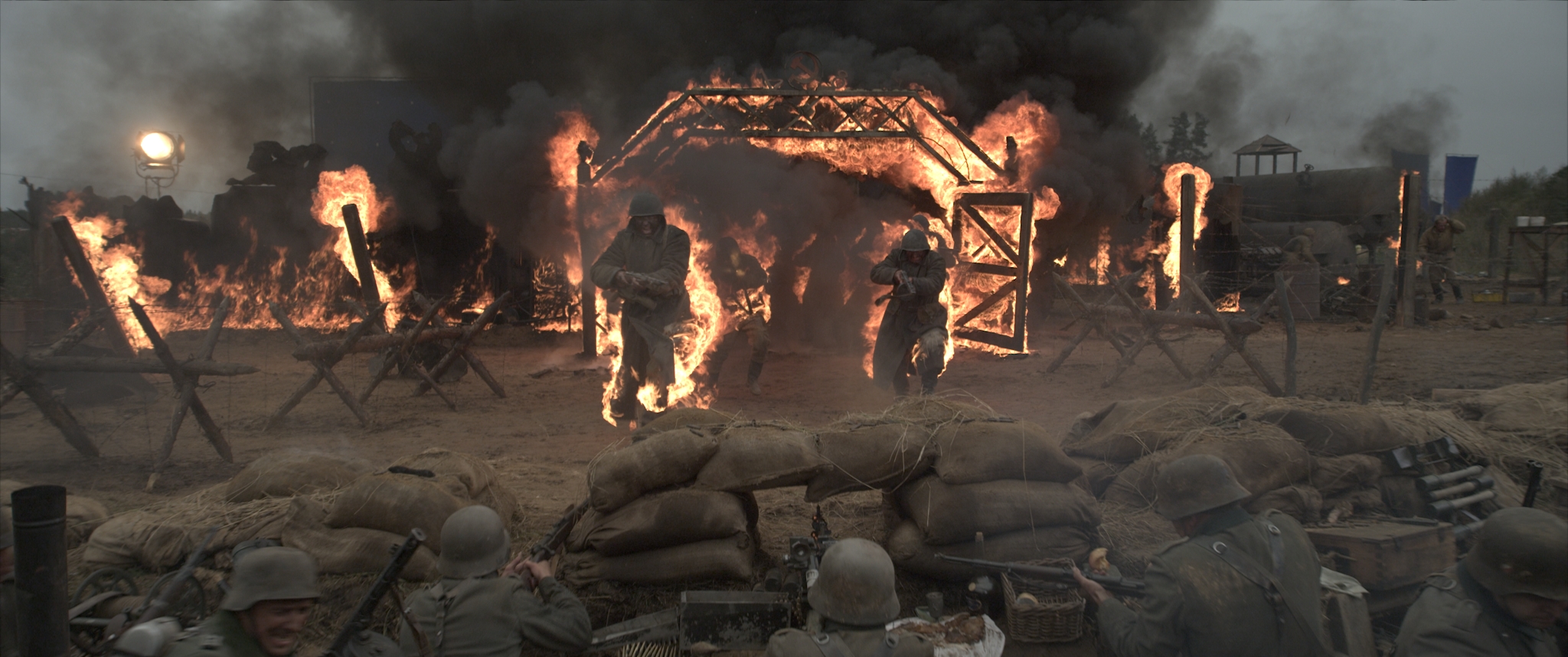
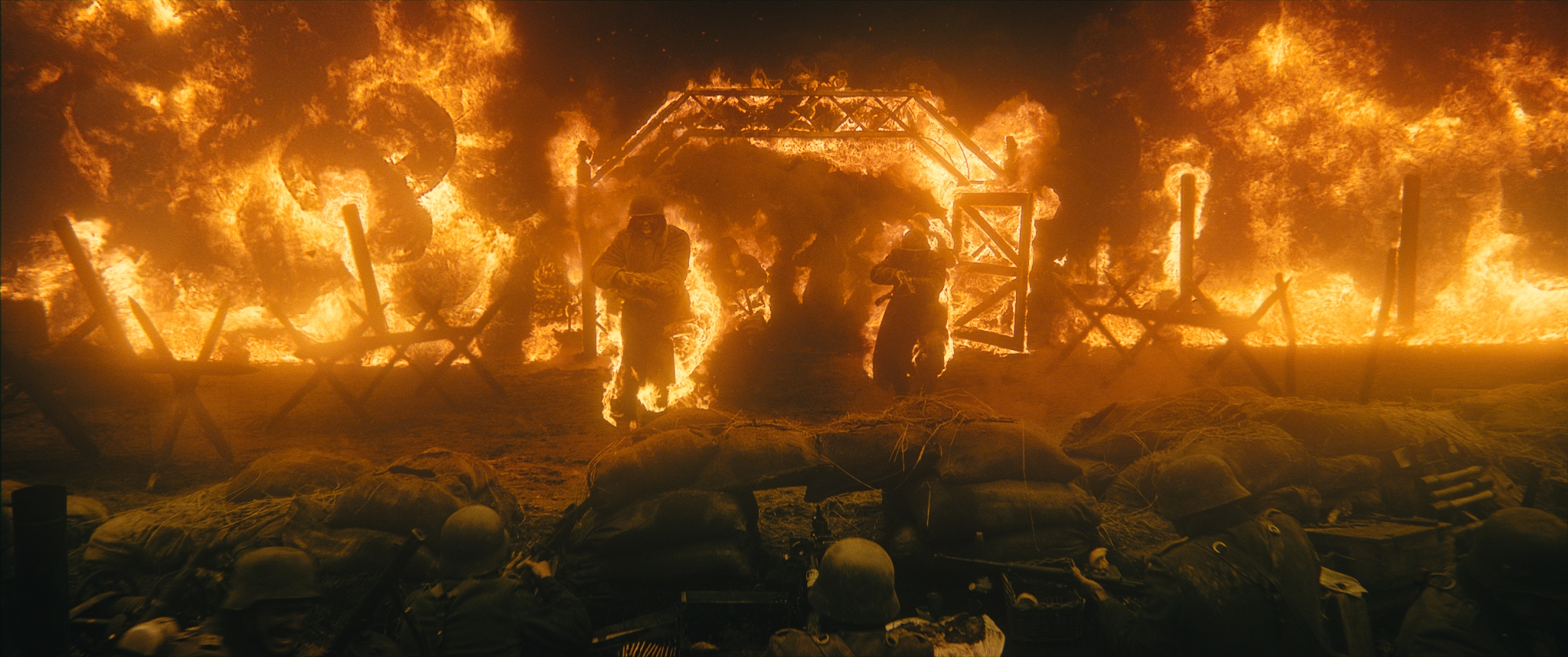
They found that each volume texturing technique available had its pros and cons, for example, the default dual rest technique in the Pyro FX solver was easy to texture, but it did not quite provide the desired look required to effectively integrate the CG and practical effects because of stretching and blending artifacts. Ultimately they determined that their best course of action was to run most of their Pyro FX simulations using advected particles inside volumes and then carry over the local coordinates. Taking this route allowed them to find the sweet spot they were looking for.
Animating Crowds
Stalingrad features two separate explosive-filled sequences where CG crowds were used because of the safety risks live actors have faced. One shot involved the explosion of a large oil tank and the other involved explosives going off in Stalingrad’s town square. The crowds were not that big, typically varying between 40 and 100 characters. Maintaining realism in how the animated characters moved was a challenge as they were required to navigate a rugged terrain.
In the oil tank sequence, their initial approach was to prepare all of their animation clips in Maya and then import them as geometry cache into Houdini in order to to assemble the scene. During production tests, they observed that there was a noticeable empty space residing between the character’s feet and the terrain which was laden with small pits and hills.
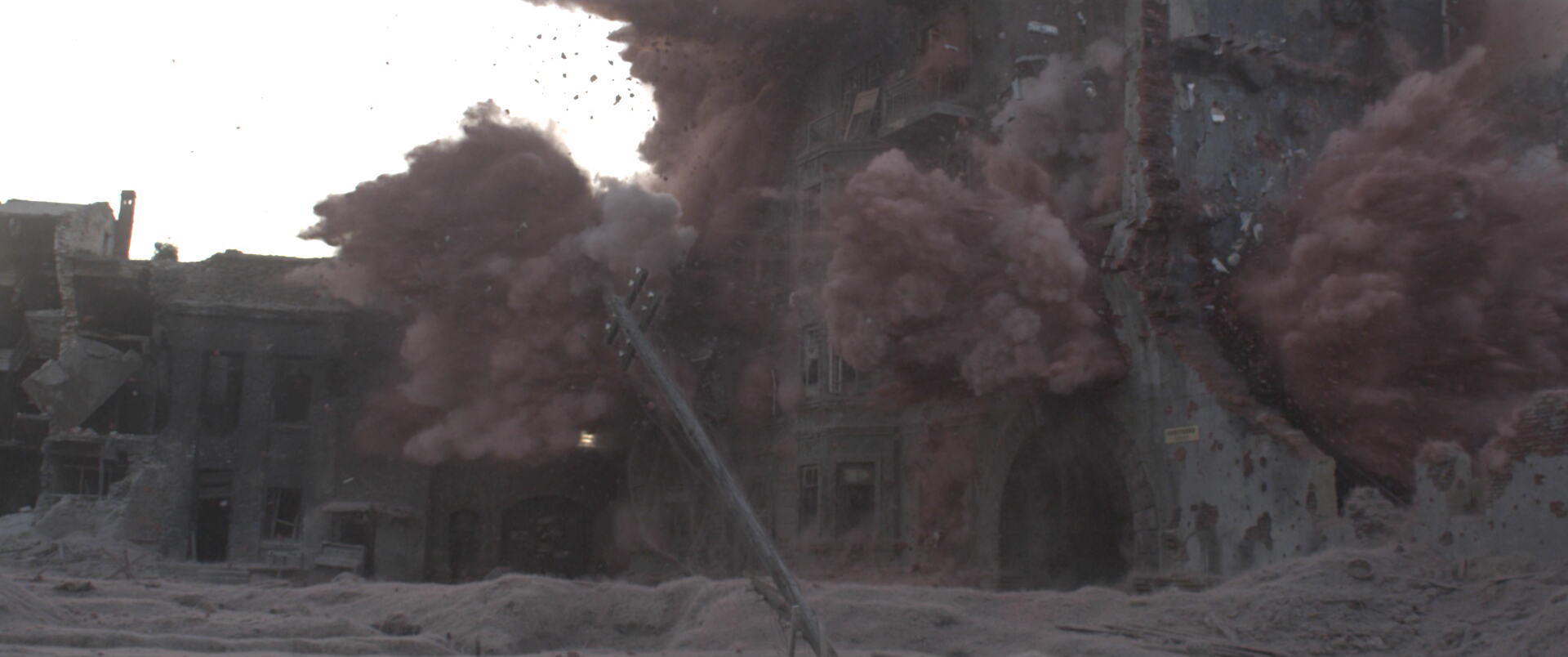
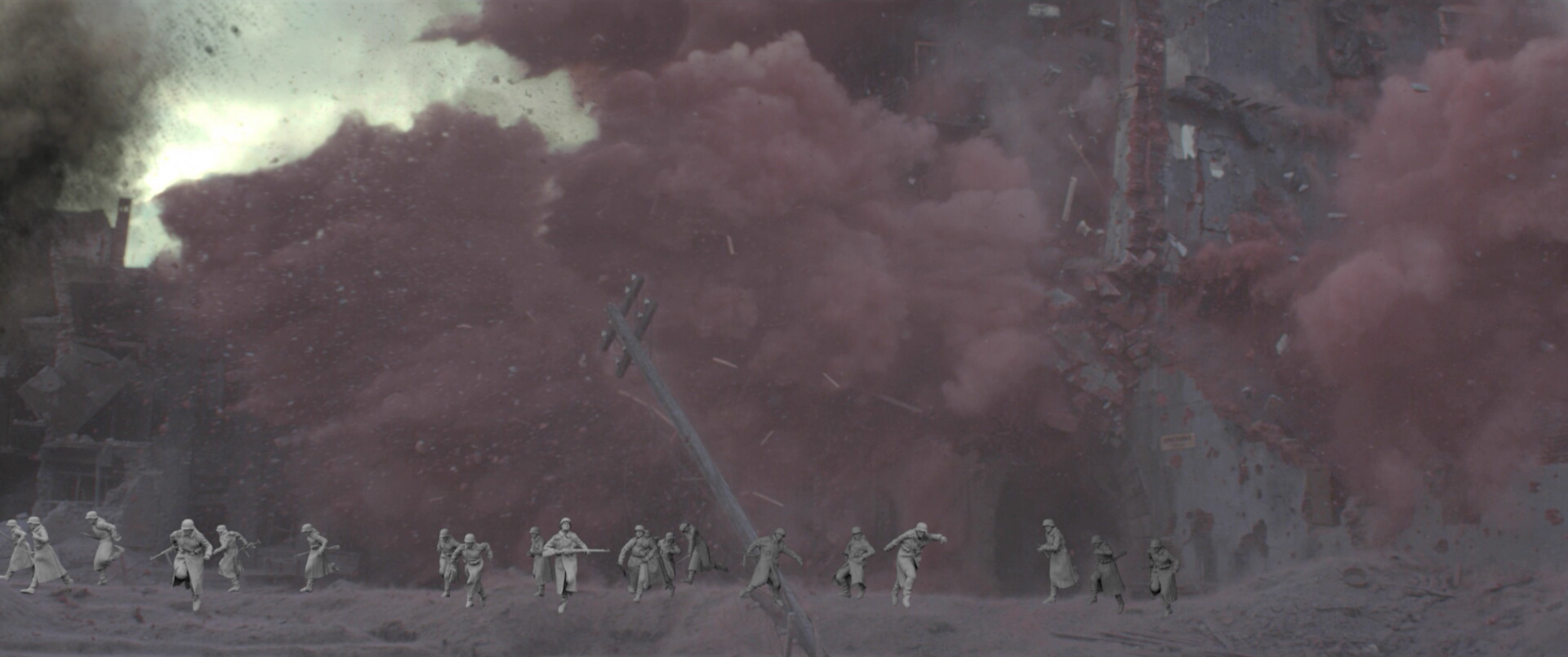
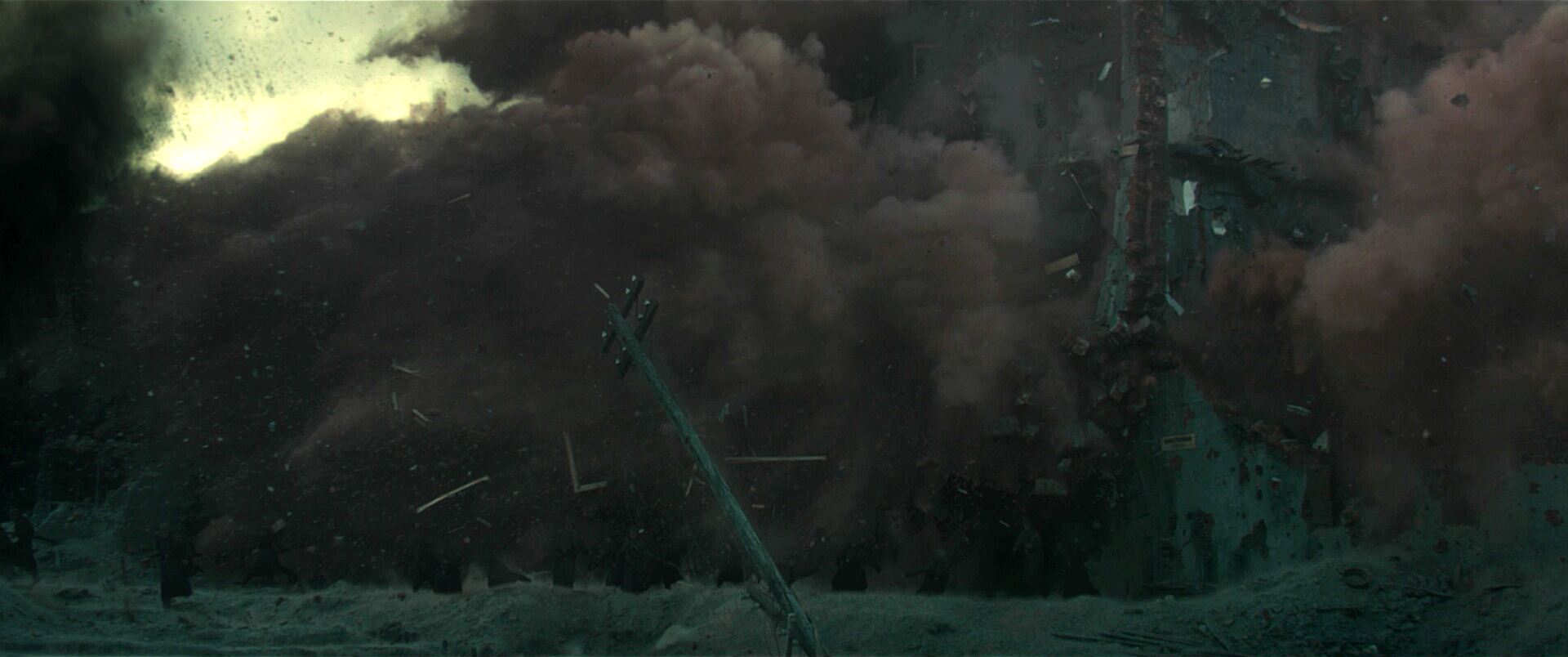
“In order to escape animating each character individually we decided to reconsider our methods and try using Houdini for procedural correction of animation” explains Alexander Lipilin, Animation Supervisor at Main Road|Post. “We imported character joint animation from Maya to Houdini using the in-house tools that we had developed for our previous project “August.Eighth”, and then retargeted these animation clips to simple rig with ik-legs. Doing this allowed us to correct the animation nuances in CHOPs enabling the character’s feet to match the ground properly. It also provided better blending between different animation clips, giving us better results in general and also aiding cloth simulations - so we had less troubles with getting the character to tween from t-pose to its movement in shot”.
When moving on to their work for the town square shelling sequence, the team decided that they would revise their animation pipeline. They created a character control rig with mocap retargeting in Houdini, enabling them to do all the keyframed animation in Houdini as well as bring in animation data from any other source. Despite having the tools for manual animation, this time the bulk of the animation was created using mocap data.
Ragdolls were used to help work out shots where soldiers were thrown into the air by shell explosions. If a CG character was within range of an explosion, it’s skeleton would be converted onto the ragdoll, retaining it’s pose at the moment of explosion. The shockwave from explosion’s center was then applied to some of ragdoll’s body parts, and after the simulation completed the results were then retargeted back onto the CG character’s skeleton.
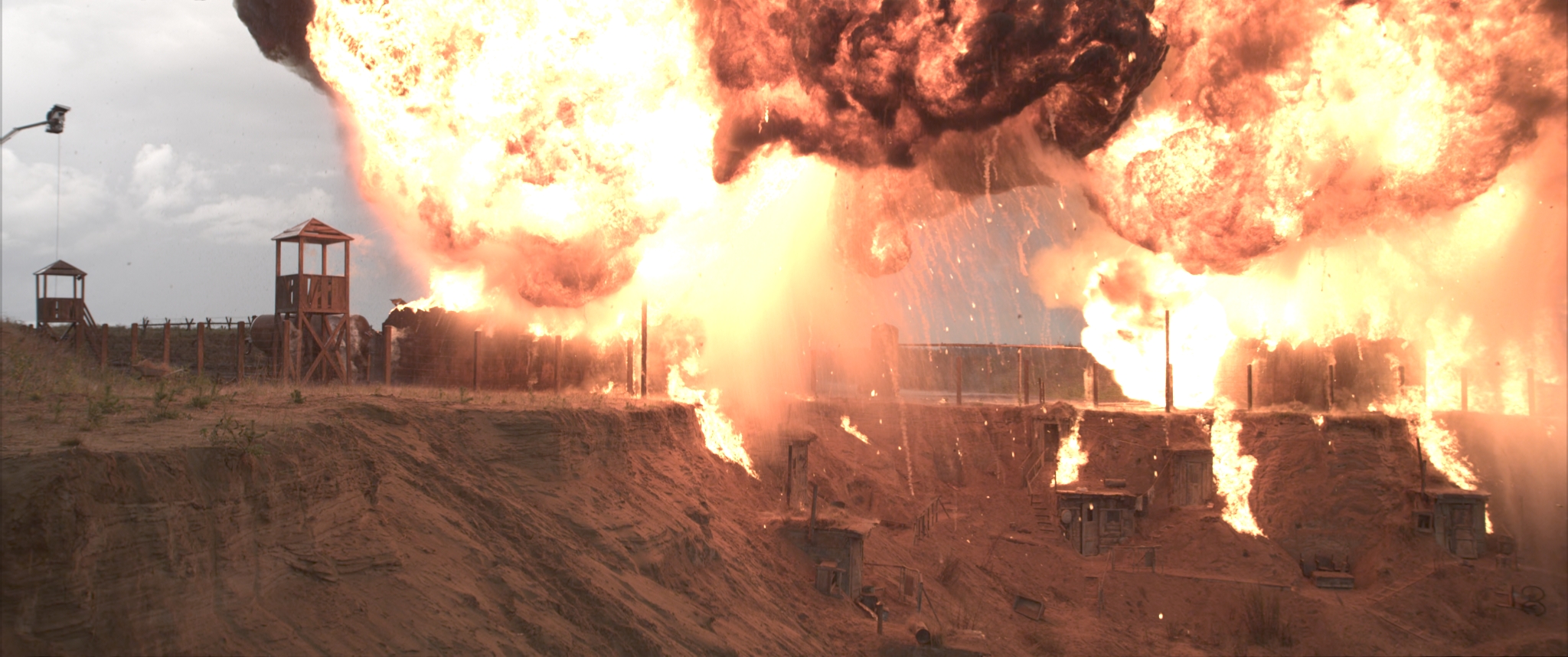
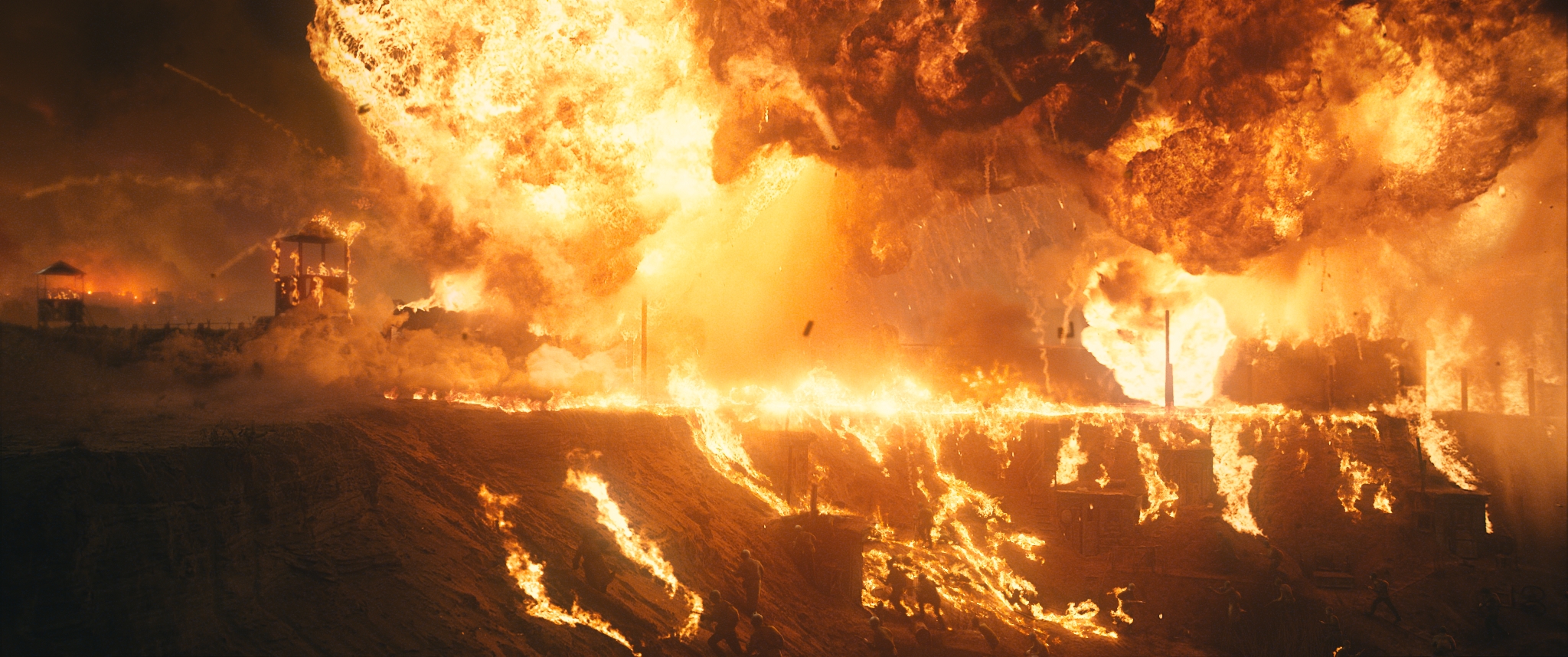
Incorporating Houdini’s Cloth solver was one of the key features that they used to help improve the overall realism of the CG crowds. The CG soldiers were dressed in overcoats and moved about rather quickly, and therefore helped in masking some of the previously stated animation flaws. Houdini was used to handle all of the cloth sims in these crowd sequences.
“It took some time for us to tune the simulation setup and fix the animation clips to meet our requirements” says Alexander. “After making the initial preparation work and then packing it all into a Houdini Digital Asset, the simulations were scheduled in batch mode for each character to simulate independently with practically no additional adjustments required”.
Plane Crash Sequence
A key shot in the film involves a large, fiery aircraft that collides into the town square. This offered the most challenging yet interesting VFX work for Main Road|Post to work on.
The actual movement of the aircraft was animated by hand by Main Road|Post’s VFX Art Director Andrey Maximov. This sequence incorporates almost all types of Houdini generated dynamics including Rigid Body Dynamics to simulate the destruction of the buildings along with the statues the aircraft collides with during its descent. Particles were used to generate small scale details such as fire and sparks emitting from the plane as well as the dirt and debris that kicks up at the final moment of impact. Fluid dynamics were used to add smoke and disperse dust. Geometry solvers were used to handle the bending of the plane as it interacted with the ground. There were about 50 volumetric simulations and 30 different RBD simulations involved in this sequence alone.
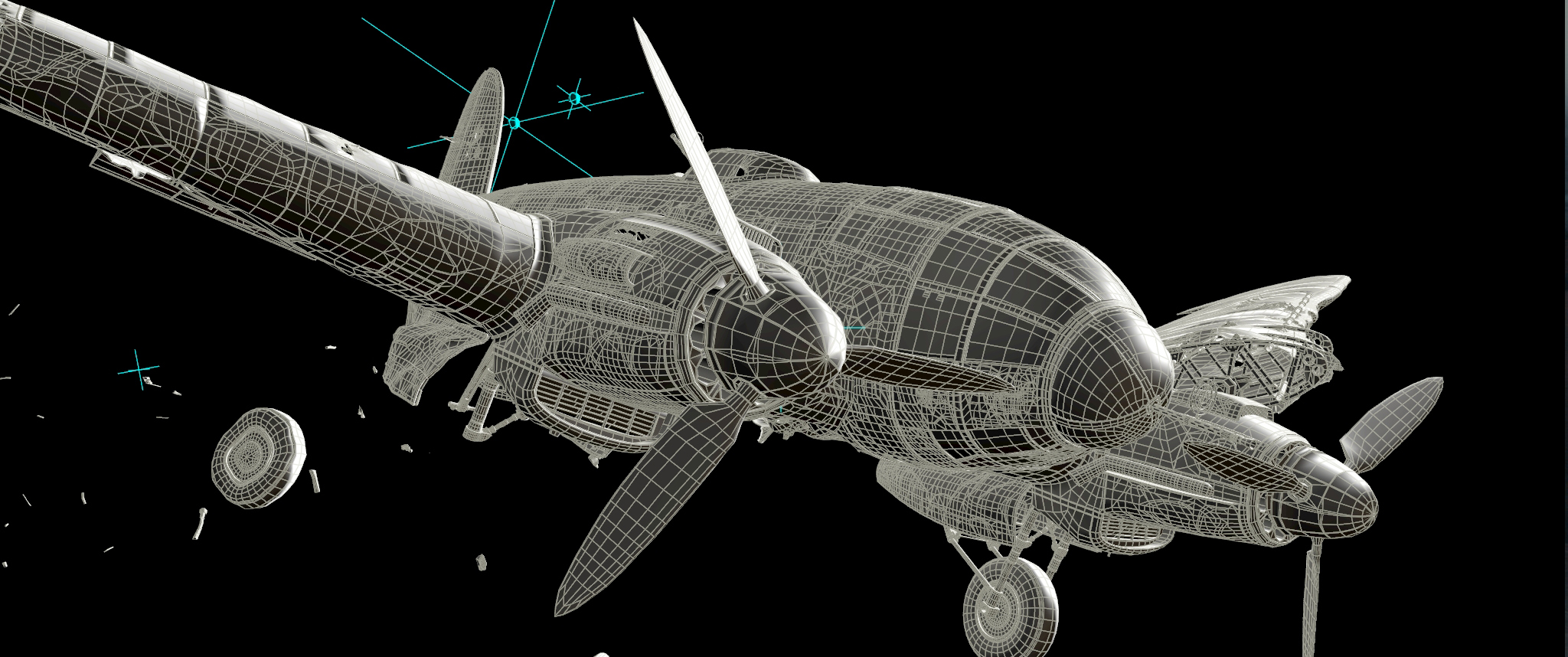
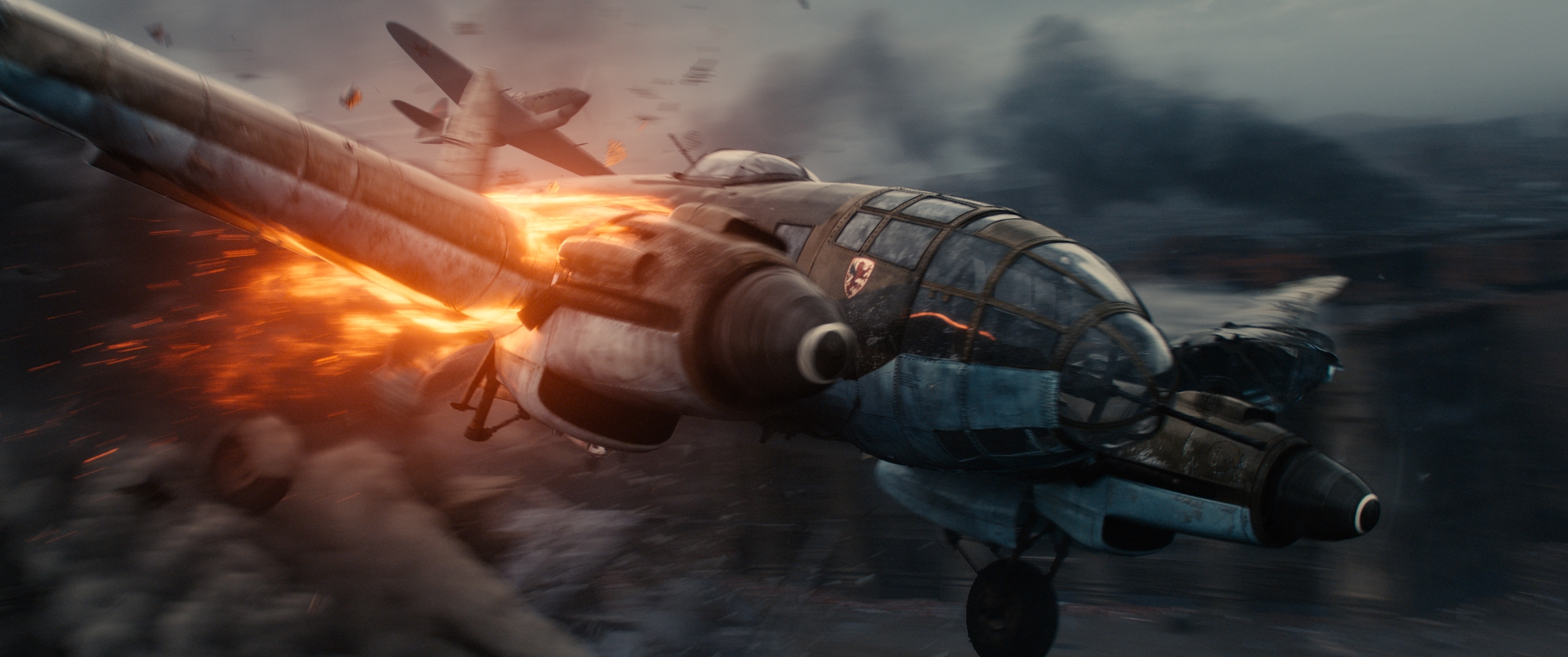
“For most of the destruction shots, we used combinations of Bullet and Geometry solvers. These offer interesting results when used individually, however when they are combined, in an artist way, the results are amazing” comments Mikhail Lesin, CTO at Main Road|Post. “In my opinion, one of the strongest abilities of the Dynamics system in Houdini is its flexibility to combine a variety of dynamic solvers together. We have to trade off simulation speed for that sometimes, but it’s worth it.”
Lighting And Rendering
Main Road|Post turned to Houdini’s Mantra renderer for its ability to render displaced volumetrics and ended up using it to handle all of their shading work for this project.
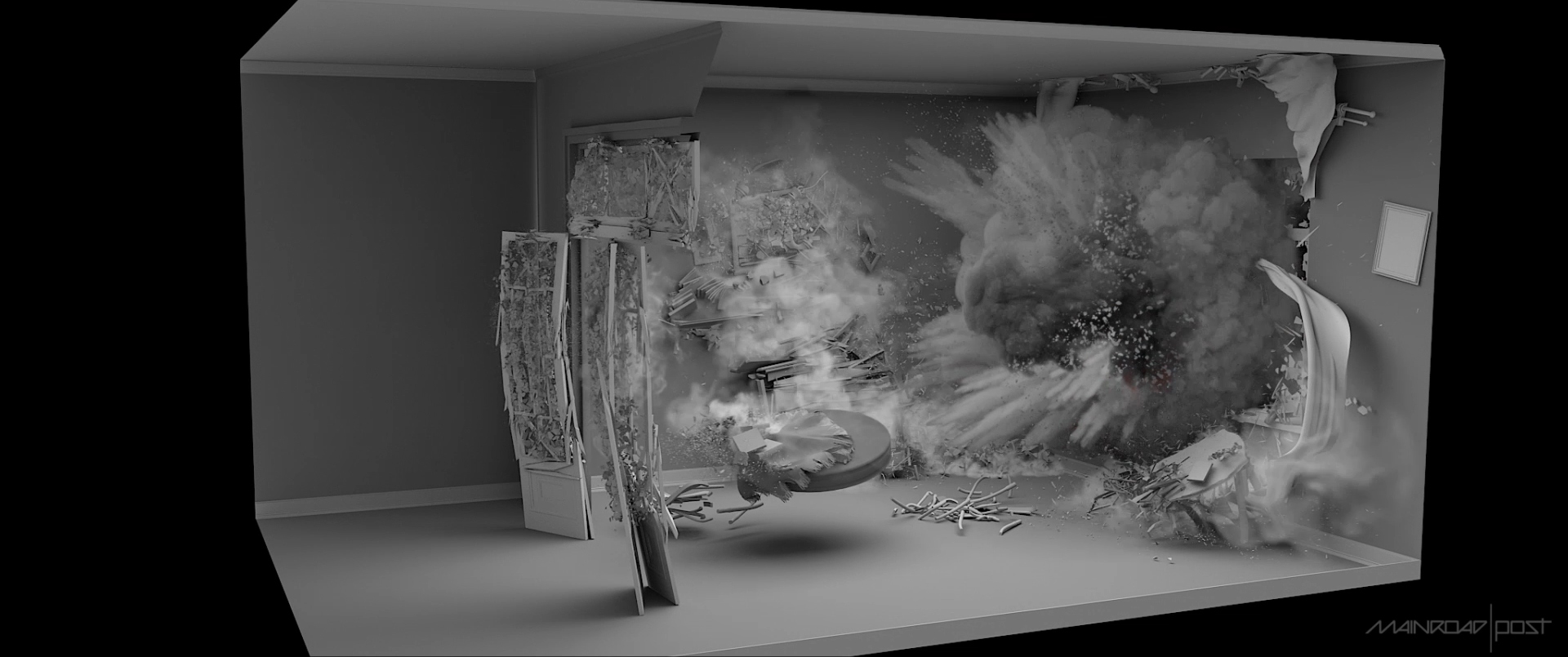
“In my opinion, it is very unique to have a physically based renderer that provides as much flexibility as Mantra does” says Mikhail.
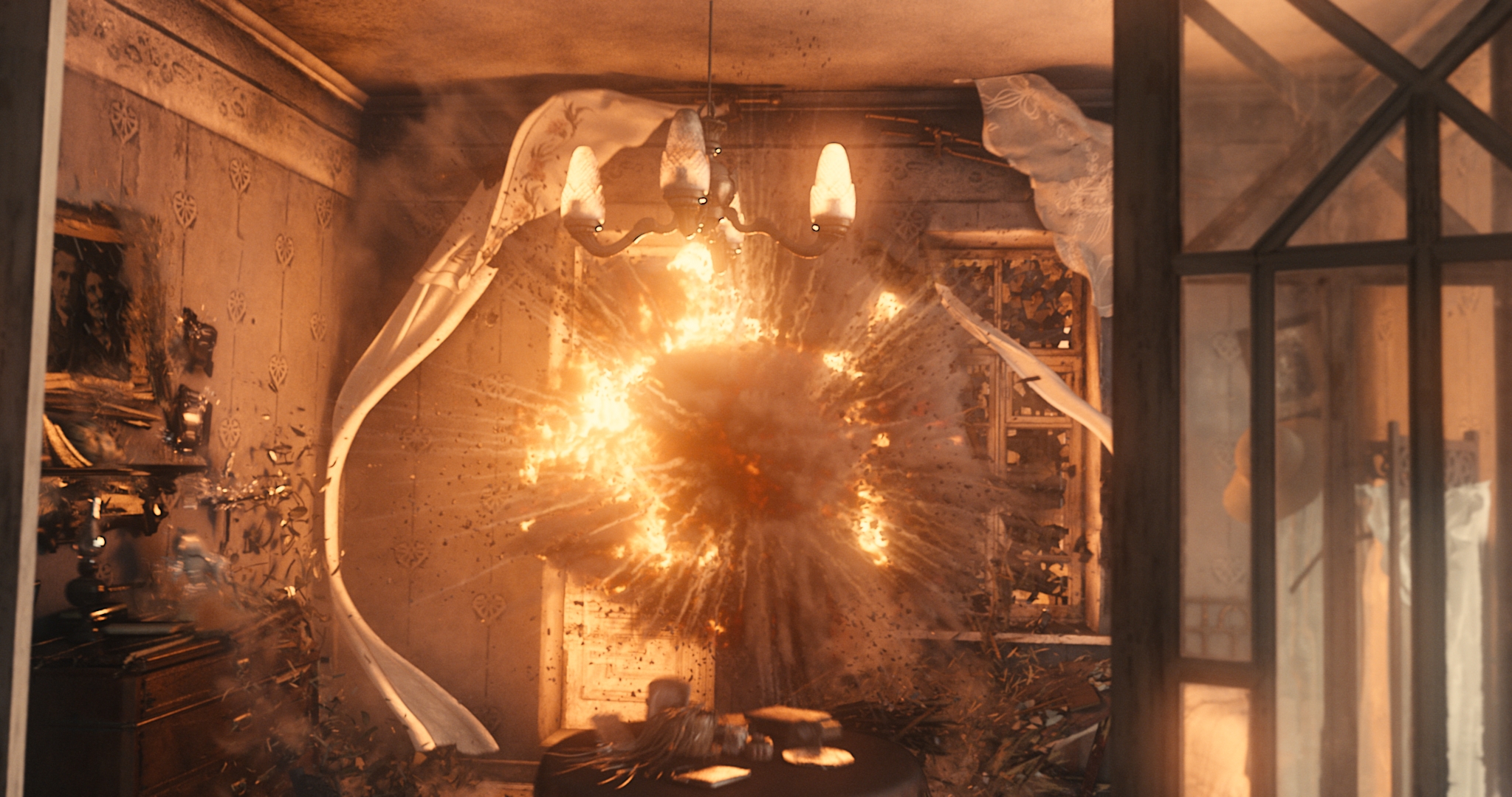
The beautifully executed VFX reel for Stalingrad has been a huge hit online and will most certainly raise eyebrows when it hits cinemas this February. Houdini provided this up and coming studio a tool that let them overcome many different challenges and ultimately accomplish all of their goals.
COMMENTS
Please log in to leave a comment.